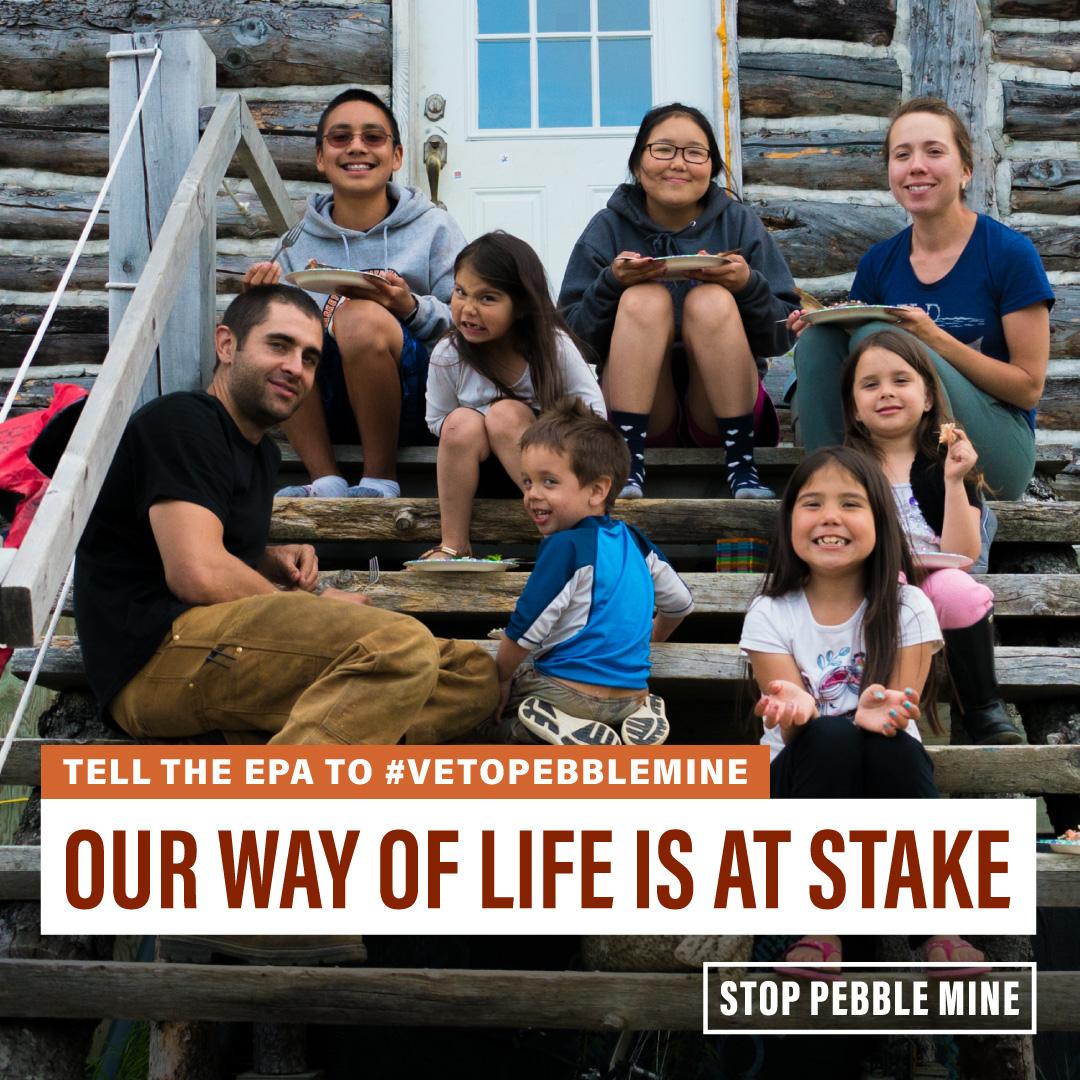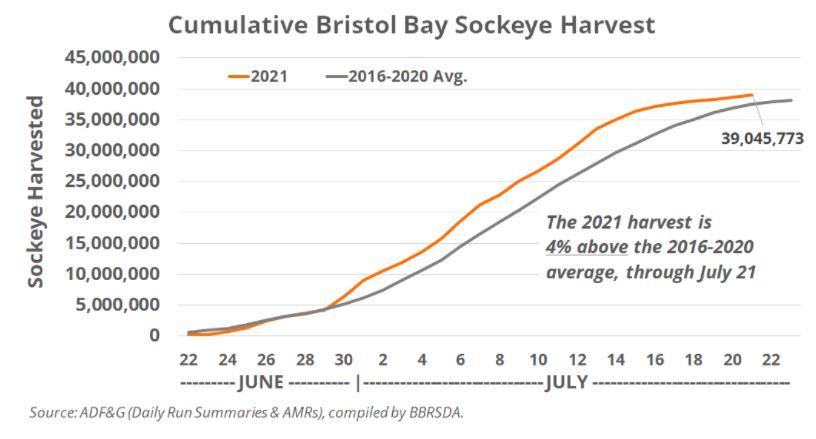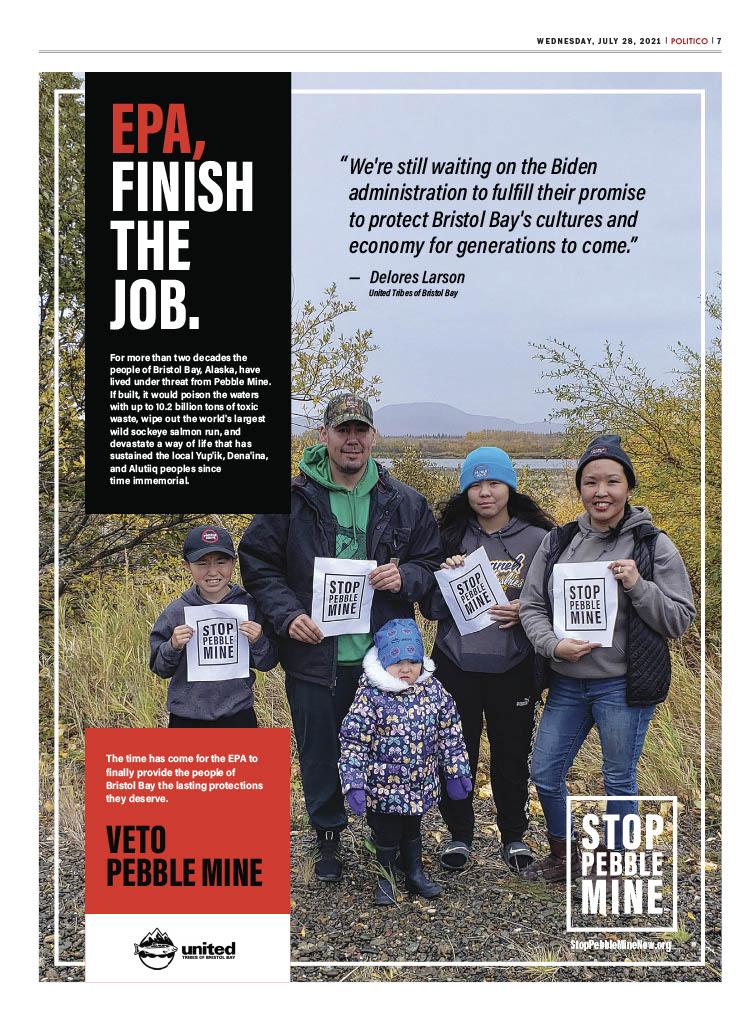
EPA must protect Bristol Bay once and for all
By Katie Strong, Trustees senior staff attorney
For years, Alaskans have made it clear that trading salmon for copper and gold is a bad deal that they’re unwilling to make. And for good reason: Bristol Bay nourishes an intact and thriving ecosystem that supports the world’s largest sockeye salmon fishery.

In 2021, the fishery had another record-setting year, with nearly 66 million sockeye salmon returning. This $2 billion fishery produces over 15,000 jobs–and, for salmon lovers, fills plates around the country, as well as smokehouses and freezers in Bristol Bay communities and throughout Alaska.
An unparalleled fishery
Why do we see record salmon runs? The Bristol Bay watershed, and the complex ecosystem it supports, remains in its healthy and natural state.
Last year, the U.S. Army Corps of Engineers understood that the threats from mining to salmon and the watershed are not acceptable, and denied Pebble Limited Partnership’s application to construct a largescale copper and gold mine.
Pebble appealed that permit denial, starting a process that might take a year or more to complete. If the Army Corps upholds its decision to deny the permit, Pebble could challenge that decision in court, or submit a new application, starting the process over again. You see, the Army Corps can only process permit applications. It cannot provide more lasting protections for regions where certain activities — like large-scale mining — are simply incompatible with preservation of healthy aquatic ecosystems.

The EPA can protect Bristol Bay permanently
The U.S. Environmental Protection Agency does have the ability to declare places off limits, or place limitations on activities that it determines pose unacceptable threats to our waters.
Based on the known threats from the Pebble mine, EPA can affirmatively and permanently protect the headwaters of Bristol Bay — and the communities, fisheries, and wildlife that rely on that region. That’s why Trustees recently wrote to EPA to voice support for the United Tribe of Bristol Bay’s request that EPA protect Bristol Bay from the threat of the proposed Pebble Mine by exercising its authority under Section 404(c) of the Clean Water Act. This would make it clear to Pebble that the headwaters of Bristol Bay are no place for a mine.
The science speaks loud and clear
For years, scientists have evaluated the potential impacts of developing a mine in the headwaters of Bristol Bay, and repeatedly reached the same conclusion: large-scale mining would irreparably impact the area’s wetlands, waters, and the fish that depend on them. For example:
- Matthew Schweisberg, a wetlands ecologist and wildlife biologist who worked for EPA for nearly 33 years before retiring, found that PLP’s proposed mine “would have an immense, unprecedented, and uncompensable impact on the Bristol Bay watershed.”
- Siobhan Fennessy, Ph.D., an expert in wetland ecosystems, emphasized that the mine’s destruction of thousands of acres of wetlands and hundreds of stream miles “will result in the disastrous, permanent loss of diverse, high quality habitat, with substantial negative effects on salmon and other biota.”
- Sarah O’Neal, a Ph.D. candidate with over 20 years of experience in freshwater ecology in salmon ecosystems (including over 10 years of experience in Bristol Bay), concluded that “water quality will nearly inevitably suffer significant degradation during the course of mine construction and operation, which will ultimately impact fish and other aquatic life.”
- Gordon Reeves, Ph.D., a former research fish biologist for the U.S. Forest Service, and Susan Lubetkin, Ph.D., an environmental statistician, wrote a joint report, in which they found that “approving a permit for the proposed mine based on the results and conclusions in the FEIS is likely to result in large and irreparable harm to the fish populations in the affected streams and have potential ecological, economic, and social consequences to the affected streams and throughout the Bristol Bay area.”
Based on the comprehensive and overwhelming science, EPA needs to step up now to protect Bristol Bay for good. You can encourage EPA to take this critical action and finish the job it stated back in 2014 by clicking here. And you can see an overview of all the actions being taken to protect Bristol Bay here.


